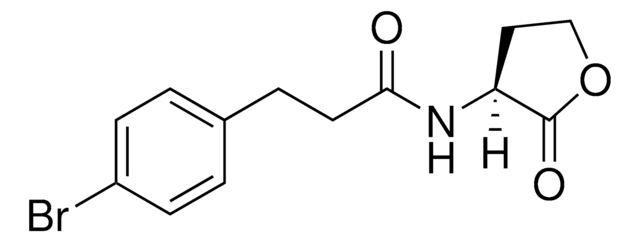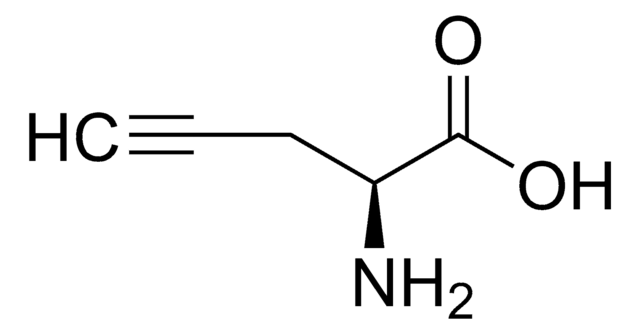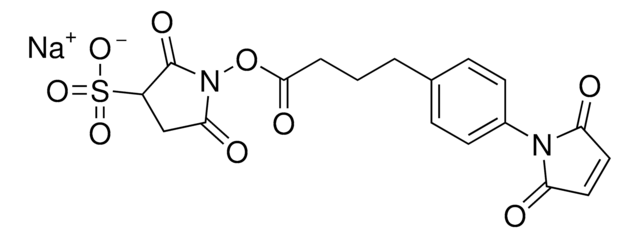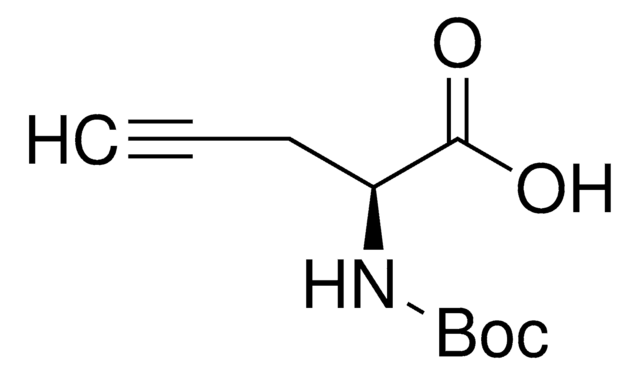推荐产品
形式
solid
储存温度
−20°C
SMILES字符串
O=C(OCC1)[C@@]1([H])NC(CC2=C(Br)C=CC=C2)=O
InChI
1S/C12H12BrNO3/c13-9-4-2-1-3-8(9)7-11(15)14-10-5-6-17-12(10)16/h1-4,10H,5-7H2,(H,14,15)/t10-/m0/s1
InChI key
MMJSTOMMZPSKSQ-JTQLQIEISA-N
应用
警示用语:
Warning
危险声明
预防措施声明
危险分类
Acute Tox. 4 Oral
WGK
WGK 3
闪点(°F)
Not applicable
闪点(°C)
Not applicable
法规信息
相关内容
Our laboratory pursues research at the chemistry-microbiology interface. We are deeply interested in the mechanisms by which bacteria sense each other, their environment, and the eukaryotic hosts on which and in which they may reside. One prominent pathway that we study is called quorum sensing, which allows bacteria to assess their local population density and initiate group behaviors at high cell (or “quorate”) density. This pathway allows, for example, many pathogens to amass in large populations prior to attacking their hosts. Bacteria use chemical signals for quorum sensing, and it is the concentration of these signals in a given environment that alerts the bacteria to their current cell number. We are interested in the structures of these signals and how we can reengineer them to either ablate or amplify quorum-sensing networks. Through synthesis and systematic screening, we have identified critical structural features of these signals and non-native functionality that we can install into the signals to tune their function. Thereby, we have developed non-native molecules that strongly inhibit or activate quorum-sensing pathways and modify infection processes. These compounds represent useful tools to explore the role of quorum sensing in many biological processes. We are applying them to both study fundamental aspects of quorum sensing pathways, and examine different types of infections in animals and plants.
我们的科学家团队拥有各种研究领域经验,包括生命科学、材料科学、化学合成、色谱、分析及许多其他领域.
联系技术服务部门
![3-nitro-N-[(3S)-tetrahydro-2-oxo-furanyl]-Benzeneacetamide](/deepweb/assets/sigmaaldrich/product/structures/359/345/84dce0b7-5476-4bd2-b467-83945493ab42/640/84dce0b7-5476-4bd2-b467-83945493ab42.png)
![4-iodo-N-[(3S)-tetrahydro-2-oxo-3-furanyl]-Benzeneacetamide](/deepweb/assets/sigmaaldrich/product/structures/721/330/88bfbc8b-7de3-4049-b120-c6d501b5b553/640/88bfbc8b-7de3-4049-b120-c6d501b5b553.png)







